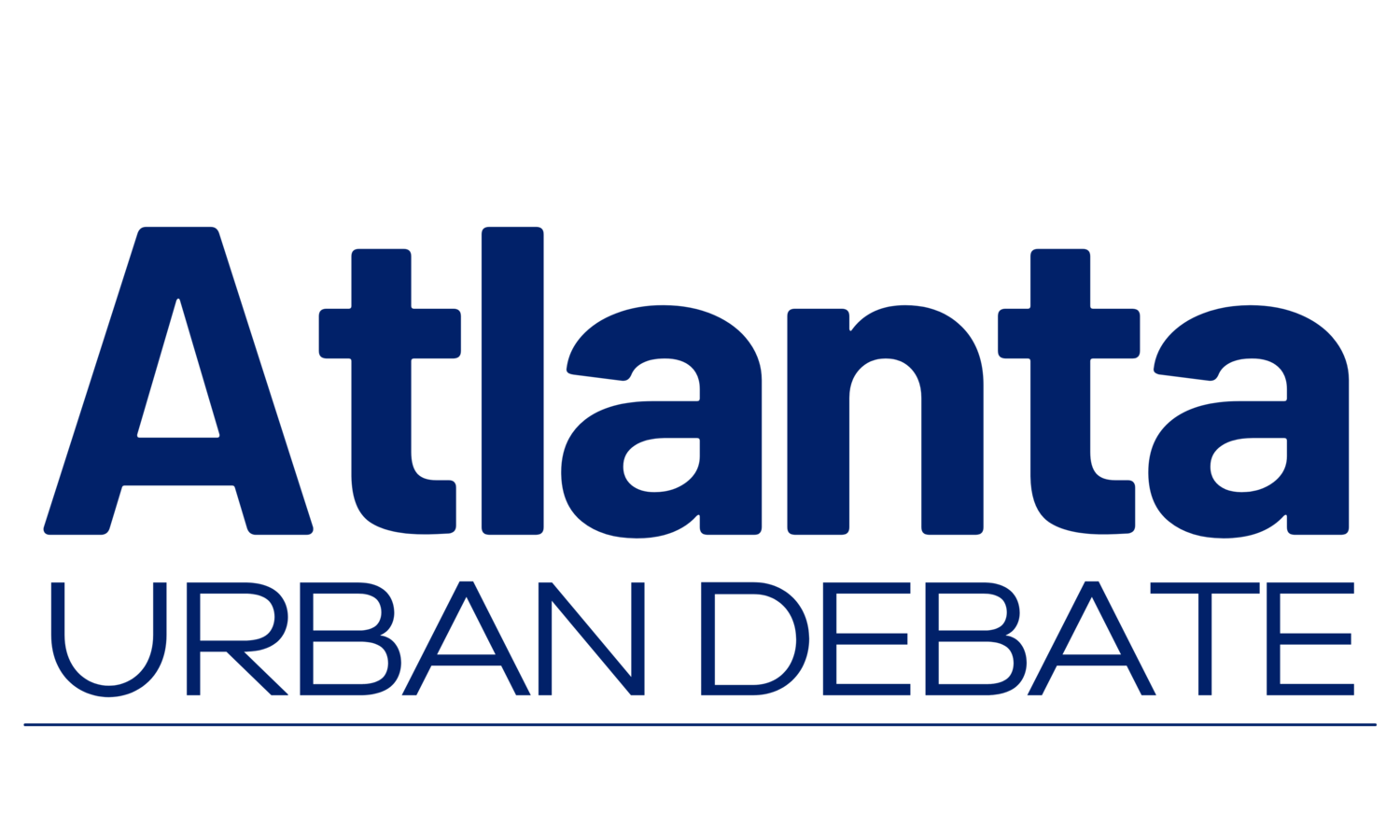The Atlanta Urban Debate League is committed to providing excellent debate education programs, services, and opportunities to diverse students, educators, and members of the community!
Middle School JV Curriculum Guide
Turns
Turn arguments make the other side’s impacts/offense into yours, giving the judge another reason to vote for you even if they are worried about the impact presented by the other team. There are various kinds of turns, but they will always be offensive arguments that somehow flip the logic of the other side.
Making Turn Arguments as the Affirmative
As the affirmative, you can turn two different parts of the disadvantage: the link and the impact.
To turn the link, there are 3 arguments which should be part of the 2AC:
Non-unique: The status quo is not how the negative describes it
No link: The plan doesn’t do what the negative claims (something bad)
Link turn: The plan actually does the opposite of what the negative claims (something good)—this is the new reason for the judge to vote for the affirmative
To turn the impact, there are 2 arguments which should be made:
No impact: Nothing bad like what the negative claims happens
Impact turn: The disadvantage “impact” caused by the plan is actually good—this makes triggering the impact another reason for the judge to vote affirmative.
Let’s look at an example using a generic economy disadvantage where the 1NC says:
Uniqueness: The US economy is okay now
Link: The plan ruins the US economy
Internal Link: The US economy collapsing ruins the global economy
Impact: Global economy collapse leads to nuclear war
A link turn for this disadvantage could look like this:
Non-unique: The US economy is not doing well in the status quo
No link: The plan doesn’t hurt the US economy
Link turn: The plan helps strengthen the US economy
Here, the 2AC would agree with the internal link and impact and argue that this means the plan actually prevents global economic collapse and therefore nuclear war
An impact turn for this disadvantage could look like this:
No impact: Economic collapse doesn’t lead to nuclear war
Impact turn: Collapsing the economy is good because many economic practices are bad for the environment and make climate change worse
Here, the 2AC would agree with the uniqueness and link so that they can say the plan ultimately causes the beneficial “impact”.
Be careful when making turns!
When making turns, it’s important not to make contradictory arguments, also known as a double turn. You should choose to make either a link turn OR an impact turn, never both at the same time for the same disadvantage. Making both arguments means you are now saying the plan prevents something good from happening.
Answering turns as the Negative
How you answer the affirmative’s turn arguments depends on what other arguments have been made. You may concede defensive arguments (i.e., non-unique, no link, no impact) and/or try to win that your logic about the disadvantage scenario is correct.
If the affirmative makes both a link turn and no impact argument in the 2AC, you can concede that there is no impact to the disadvantage, meaning the plan no longer prevents something bad from happening.*
If the affirmative has made a non-unique and/or no link argument in addition to an impact turn, you can concede the non-unique or no link argument, meaning the plan no longer causes anything beneficial.*
*These options only work if you have another offensive option to rely on, such as a second disadvantage, because these concessions will take out your disadvantage. You never want to be left with no offense/impacts!
If you can’t or won’t concede part of your disadvantage, you must win that all the parts of their turn argument are incorrect, and that the chain of events outlined in the 1NC is the most accurate.
You MUST do this if the affirmative has only made turn arguments without adding on any defensive arguments (this is known as a straight turn).
Making Turn Arguments as the Negative
As the negative, you have 2 ways to make turns: impact turns and DA Turns Case arguments.
Impact turns work similarly for the negative, but focus on the harms/impact of the affirmative case instead of a disadvantage. If the affirmative has multiple advantages/harms/impacts, make sure your arguments are clearly specific to a particular impact (e.g., if an affirmative has one advantage solving for climate change and another advantage solving for war, you would have to make separate impact turns for the advantages).
Case turns, or “Disadvantage turns the case” arguments, use the logic of the disadvantage to argue that the disadvantage concurring would either cause the affirmative harms or make them harder to solve. This means that even if the judge thinks the affirmative harms outweigh/are more important, they should still vote for the negative.
For example, if an affirmative advantage claims to solve climate change and the negative disadvantage claims the plan causes nuclear war, the negative might argue that nuclear war makes it impossible to solve climate change because of the drastic environmental impact nuclear weapons would cause, meaning the judge should vote negative to prevent nuclear war AND keep climate change from being impossible to solve.
